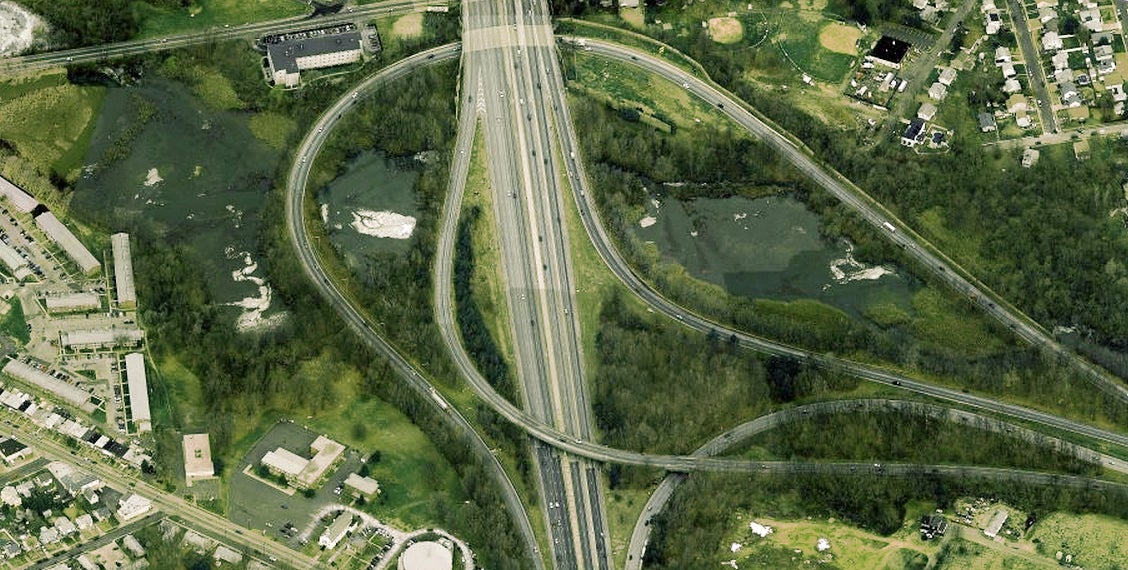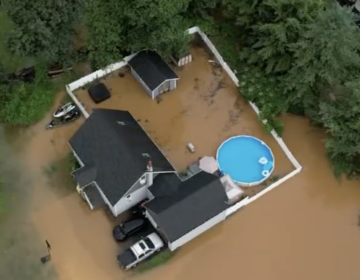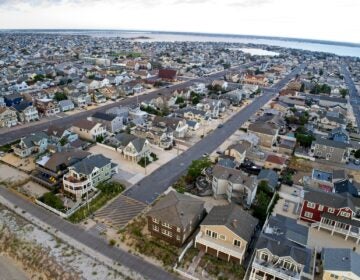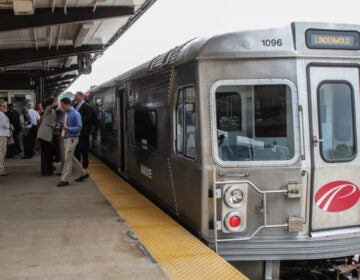Progress is noisy for residents near I-295/I-76 road construction

The large curvy road is the southbound lanes of I-295, which will be overhauled by NJDOT. (Image from Bing Maps)
Being mayor of a town situated next to a major highway interchange has its perks. It also has its disadvantages.
On the upside, “When we call the New Jersey Department of Transporation (NJDOT) they come and check things out,” said Frank Filipek, mayor of Bellmawr, a southern Camden County town whose residents are feeling the downside of being next to I-295, I-76 and Route 42.
In March the state began a nearly decade-long road construction project that when done will allow I-295 drivers to continue straight over the I-76/Route 42 highways. In addition, NJDOT plans to construct 10 new bridges, 22 retaining walls, and more than 15,000 feet of new or reconstructed noise walls during the project, which is scheduled to be finished in 2021.
Residents vent
But for Mayor Filipek progress is taking a toll on his residents. They call because construction noise is keeping their babies awake at night. They call because they miss the trees that used to provide nature trails and a buffer from the highway. They call because their little league field has been flooded and noxious odors from machinery and materials are forcing them to keep the non-air-conditioned clubhouse windows closed. They call because mud flies on their parked cars, construction vehicles clog their residential streets, and recreational baseball players can’t see the ball for the glare from cars and trucks on the highway. But mostly they call about the noise.”It’s been a big burden for us,” said Filipek. “But we’ll probably eliminate this eventually.”
Eliminating “this, eventually” is the carrot that’s being waved in front of residents and motorists whose lives and commutes are being disrupted by the most extensive highway renovation project in NJDOT’s history. Spread over four phases and eight years, the project calls on NJDOT to reconfigure the interchange where I-295, I-76 and Route 42 meet, which is considered confusing and dangerous for motorists.
“From the time the interstate highway was built, I-295 motorists who wish to travel through the interchange and remain on I-295 must exit the interstate and travel on I-76 and Route 42 for about a half-mile before they take a ramp to return to I-295,” said NJDOT Director of Communications Joe Dee. “As you can well imagine, or, perhaps as you have experienced, this layout requires dangerous weaving movements for motorists on roadways that are very congested during peak travel times.”
Because these roads carry heavy Philadelphia commuter traffic and is the gateway to many shore points, this interchange ranks as the busiest and most dangerous in South Jersey.
This is another downside for Bellmawr. Its fire stations provide service for accidents that occur at this interchange, and Mayor Filipek said last year they accounted for 70 percent of his fire calls. He added that Bellmawr didn’t get reimbursed for these life-saving efforts.
Building highways to keep up with growth
Camden County Freeholder Ian Leonard, said the region has changed since the highways were originally built. “Some of these roads were designed and built 60-70 years ago. They’re antiquated.”
They were considered antiquated as far back as 1985, when NJDOT designed a widening project for Route 42 and noted the need then for significant improvements. In 1999, NJDOT and the Delaware Valley Regional Planning Commission recommended the advancement of a project that provided for a full, grade-separated interchange.
But it is only now that funding and will coalesced into an actionable initiative that’s costing taxpayers $900 million in federal dollars. Supporters say the timing is right. Currently, 250,000 vehicles pass through the interchange per day, and with Gloucester County and southern Camden County growing their populations faster than most other regions in New Jersey, better infrastructure can help facilitate the progression.
“As things start to grow you have to be realistic and say, ‘This is the time.’ If you have the money and the time, you do it,” Leonard said.
WHYY is your source for fact-based, in-depth journalism and information. As a nonprofit organization, we rely on financial support from readers like you. Please give today.




